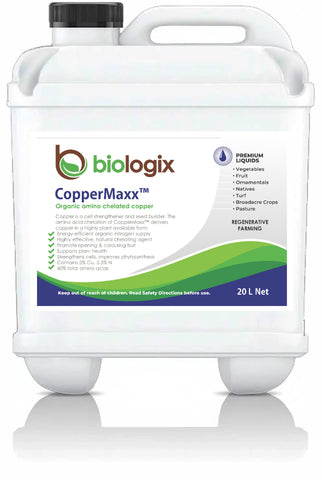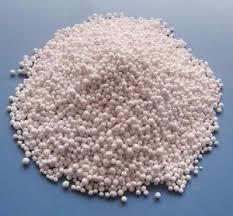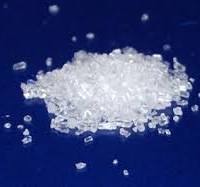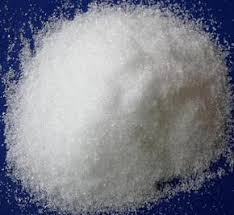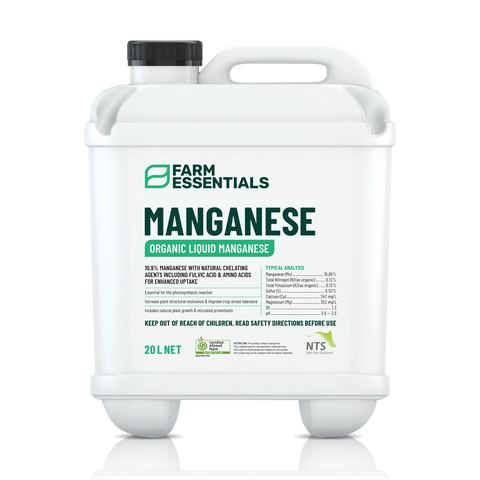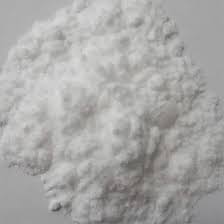
ProductDrop
SoluBor Boron 21% B
Soluble Boron for use in sprays and Fertigation, not suitable for soil applications, where slow release products like Stabilised Boron Granules or OrganiBor are more suitable for.
Benefits of Boron to Crops and Pasture
Boron (B) is an essential micronutrient for plants, playing a critical role in cell wall structure, reproductive development, and overall plant health. In New Zealand, where pasture-based agriculture and horticulture are vital, boron supplementation benefits crops and pastures in the following ways:
-
Cell Wall Formation and Structural Integrity: Boron is essential for the synthesis and cross-linking of p
-
Structural Role: Boron facilitates the formation of pectin in cell walls, strengthening plant tissues and improving resistance to physical damage and pathogen invasion.
-
Benefit: Enhances pasture resilience to grazing pressure and environmental stresses, ensuring sustained productivity in ryegrass-clover swards.
-
-
Reproductive Growth and Yield:
-
Pollen and Seed Development: Boron is critical for pollen tube growth, fertilization, and seed set, directly impacting yield in crops like clover, brassicas, and fruit trees.
-
Benefit: Improves seed production in pasture legumes (e.g., clover) and increases fruit and seed yields in horticultural crops like avocados and kiwifruit, key to New Zealand’s economy.
-
-
Nutrient Uptake and Metabolism:
-
Function: Boron aids in the transport of sugars, hormones, and nutrients, supporting photosynthesis and energy metabolism.
-
Benefit: Enhances pasture growth rates and nutrient content, improving forage quality for livestock, which is critical for New Zealand’s dairy and meat industries.
-
-
Nitrogen Fixation in Legumes:
-
Role: Boron supports nodule formation and function in legumes like clover, enhancing nitrogen fixation.
-
Benefit: Increases soil nitrogen availability, reducing fertilizer needs and boosting pasture productivity in mixed swards.
-
-
Stress Tolerance:
-
Function: Boron improves plant resilience to drought, salinity, and temperature extremes by maintaining membrane integrity and regulating water balance.
-
Benefit: Ensures consistent pasture and crop performance in New Zealand’s variable climate, particularly in drought-prone regions like Canterbury.
-
Boron Deficiency Symptoms in Crops and Pasture
Boron deficiency is a concern in New Zealand, particularly in light, sandy, or highly leached soils (e.g., volcanic pumice soils in the Central Plateau or sandy loams in Waikato) and during dry conditions when boron uptake is reduced. Deficiency symptoms vary by crop and pasture type but include:
-
Growth Abnormalities:
-
Pasture: Stunted growth in clover and grasses, with shortened internodes and thickened, brittle leaves. Clover may show distorted, puckered leaflets.
-
Crops: “Hollow heart” in brassicas (e.g., swedes, turnips), cracked stems in celery, and internal browning in root crops like carrots.
-
Horticulture: Corky lesions on apples, cracked fruit in avocados, and small, malformed kiwifruit.
-
-
Reproductive Failure:
-
Pasture: Poor seed set and reduced flowering in clover, leading to lower pasture regeneration.
-
Crops: Flower abortion, poor fruit set, or misshapen fruits in crops like apples, pears, and citrus.
-
Example: In kiwifruit, boron deficiency causes small, unmarketable fruit with low seed counts.
-
-
Meristem Damage:
-
Symptoms: Death of growing points, leading to bushy, rosetted growth or “cauliflower head” in brassicas. Young leaves may appear wrinkled or deformed.
-
Impact: Reduced pasture regrowth and lower crop yields, particularly in annual forages.
-
-
Leaf and Tissue Symptoms:
-
Pasture: Chlorosis (yellowing) in young clover leaves, progressing to necrosis. Grasses may show leaf curling or browning at tips.
-
Crops: Leaf distortion, upward cupping, or scorching in lucerne, and brown, corky tissues in root crops or tree fruits.
-
-
Hidden Deficiency:
-
Issue: Subclinical deficiencies may reduce yield or quality without obvious symptoms, especially in pastures with marginal boron levels (hot water soluble boron <0.8 mg/kg in soil).
-
Impact: Lower pasture productivity and reduced livestock performance due to poorer forage quality.
-
New Zealand-Specific Context
New Zealand’s soils, particularly volcanic, sandy, or highly leached types, are often low in boron, necessitating careful management. Boron deficiency is well-documented in horticultural crops like kiwifruit, avocados, and brassicas, and increasingly recognized in pastures, especially in regions like:
-
Waikato and Bay of Plenty: Sandy loams and volcanic soils with low boron retention.
-
Central Plateau: Pumice soils with high leaching rates.
-
Canterbury and Otago: Light, free-draining soils prone to drought, reducing boron availability.
Farmers address deficiency through soil or foliar applications of boron fertilizers (e.g., borax, sodium tetraborate, or solubor), often combined with other nutrients. Soil tests (targeting 0.8–2 mg/kg hot water soluble boron) and plant tissue analysis (e.g., 20–100 ppm in youngest mature leaves for most crops) guide application. Over-application risks toxicity, causing leaf scorching or yield losses, so precision is critical. For pastures, boron is often applied in spring to support clover growth and nitrogen fixation, with herbage tests recommended to monitor levels.
References
-
Zespri Kiwifruit: Nutrient management guidelines for boron in kiwifruit production.
-
Ravensdown: Boron fertilizers and deficiency management in New Zealand pastures.
-
Ballance Agri-Nutrients: Soil and plant testing for boron in pastoral systems.
-
HortNZ: Boron deficiency symptoms and correction in brassicas and fruit crops.
-
AgResearch: Nutrient requirements for ryegrass-clover pastures in New Zealand.
Note: Boron management requires caution, as the margin between deficiency and toxicity is narrow, particularly in sensitive crops like kiwifruit and clover.
Use Rates:
Horticulture:
Foliar Spraying: 1-2 kg /ha
Soil Application: 2-5 kg /ha
Broadacre Crops and Pasture:
Foliar Spraying: 0.5-1 kg/ha
Soil Application: 1-3 kg/ha
Knapsack Sprayer: 20 g per 10 L water
We Also Recommend

